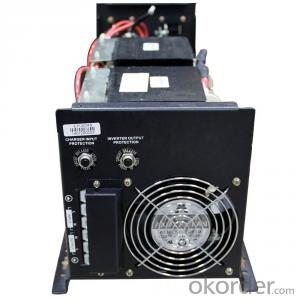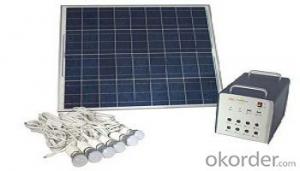Solar Energy Systems Arizona - Ground System
- Loading Port:
- China Main Port
- Payment Terms:
- TT OR LC
- Min Order Qty:
- -
- Supply Capability:
- -
OKorder Service Pledge
OKorder Financial Service
You Might Also Like
Packaging & Delivery
Packaging Detail:Normal package seaworthy
Delivery Detail:15 days
Specifications
Easy installation Competitive price TUV&SGS test report & CSA certification 15-warranty
Specifications
1) Super smooth beautiful appearance,outstanding quality,large supply.
2) Available in customized surface finishes.
3) Well machined,for example,cutting,drilling and milling with excellent tolerance.
4) Meet with customer’s designs and supply you best price.
5)Usages:Supply for solar panel modules.
Technical characteristics
Installation site:
ground,hillside,and grassland
Installation angle
it is based on customers’ requirements
Installation height
it is basedon customers’ requirements
Solar panel type; with or without frame
Components arrangement :horizontal or vertical
Support track
aluminum alloy extrusion
Quality warranty
15 years
Advantages
1)Quick installation: with high degree of pre-installed rate, the system could be easily installed by using galvanized carbon steel rails for PV Stent, and specially designed connection parts of the PV bracket, which could reduce installation time and cost greatly.
2)Offer unmatched durability: with all structural components comprised of high class stainless steel and anodized aluminum alloy, it is designed for 25 years service life and backed by 15 years warranty.
3)Stand up to extreme weather: The SuninTek solar mount is designed to stand up to the extreme weather complied with the AS/NZ 1170 and other international structure load standard by the skilled engineer. The main support components also have been tested to guarantee its structure and load-carrying capacity.
4)Provide broad installation flexibility: These systems accommodate most commercially available framed solar panels , and they can scale easily from small to large, multi-megawatt installations.
5)Diversified Application: The PV mounting system produced can be adopted by various types of PV cells panels which you can find in the market. It can serve for both mini solar power system and huge plant with megawatt capability.
Main features
1. Installation cost savings.
2. Save installation time.
3. Increase the mechanical strength of solar energy mounting to ensure that wind requirements.
4. The outdoor for installation of solar energy.
5. Length can be customized according to customers.
6. Service life of up to 25 years.
7. Products through the international certification.
8. Stent material composition of the galvanized steel and aluminum.
9. 15 years system and structural guarantee.
10.Flexible post spacing withstands different wind & snow loads.
11. High quality material in Aluminium 6005-T5 and SUS 304.
12.Screws and nuts go with every components needed.
13.Mechanical calculation and reliability tested to ensure highest product quality.
- Q: Can solar energy systems be used for powering air conditioning in commercial buildings?
- Yes, solar energy systems can be used to power air conditioning in commercial buildings. Solar-powered air conditioning systems, also known as solar thermal cooling systems, use the sun's energy to generate electricity or heat to power the air conditioning units. These systems are becoming more popular as they provide a sustainable and cost-effective alternative to traditional air conditioning methods, reducing the carbon footprint of commercial buildings.
- Q: Can solar energy systems be used in powering desalination plants?
- Yes, solar energy systems can be used to power desalination plants. Solar-powered desalination systems use solar panels to convert sunlight into electricity, which is then used to power the desalination process. This sustainable approach not only reduces reliance on fossil fuels but also helps address the water scarcity issue by producing freshwater from seawater in an environmentally friendly manner.
- Q: Are there any limitations to installing a solar energy system in a homeowner's association?
- Yes, there can be limitations to installing a solar energy system in a homeowner's association (HOA). While many HOAs have embraced renewable energy and have adopted guidelines to facilitate solar installations, some may have restrictions or limitations in place. One limitation is that the HOA may have specific aesthetic guidelines or architectural standards that must be adhered to. This means that the solar panels may need to be installed in a way that aligns with the overall design and appearance of the community. In some cases, this could mean limitations on the size, location, or visibility of the panels. Another limitation is the potential impact on property values. While solar energy systems are generally seen as a desirable feature, there could be concerns among some homeowners about the impact on property values. In some cases, the HOA may require an approval process, including a review by a committee or board, before allowing installation. Additionally, there may be limitations related to the structural integrity of the property. Solar panels can be heavy, and certain roofs or structures may not be able to accommodate the added weight. The HOA may require a structural assessment or engineering report to ensure that the installation will not compromise the integrity of the building. Lastly, there may be limitations related to legal and regulatory requirements. Depending on the jurisdiction, there may be specific permits, licenses, or agreements required for solar installations. The HOA may need to ensure that all necessary documentation and approvals are obtained, which can add time and complexity to the installation process. Overall, while many HOAs are supportive of solar energy systems, it is important for homeowners to review their specific HOA guidelines and engage in open communication with the association to understand any limitations or requirements that may be in place.
- Q: Can a solar energy system be installed on a historic building?
- Yes, a solar energy system can be installed on a historic building. However, it may require careful planning and consideration to ensure that the installation does not compromise the historical integrity or aesthetics of the building. It is important to work with experts in historic preservation and solar energy to find the most suitable design and implementation for the specific building.
- Q: Are there any environmental benefits to using solar energy systems?
- Yes, there are several environmental benefits to using solar energy systems. Firstly, solar energy is a renewable and abundant source of energy, meaning it does not deplete natural resources or contribute to resource scarcity. Additionally, solar energy systems produce electricity without emitting greenhouse gases or air pollutants, thus reducing carbon footprint and improving air quality. Solar energy also helps to mitigate climate change by reducing dependence on fossil fuels and promoting a transition to clean and sustainable energy sources. Lastly, solar panels have a long lifespan and require minimal maintenance, resulting in reduced waste generation compared to other energy sources.
- Q: Can solar energy systems be used in areas with high air pollution?
- Yes, solar energy systems can be used in areas with high air pollution. While air pollution can reduce the efficiency of solar panels by blocking sunlight, advancements in technology have made solar panels more resilient to these conditions. Additionally, regular maintenance and cleaning can help mitigate the impact of air pollution on solar energy systems. Despite the reduced efficiency, solar energy can still be a viable and sustainable option in areas with high air pollution.
- Q: How do solar energy systems impact water quality?
- Solar energy systems have a positive impact on water quality as they do not produce any harmful pollutants or emissions during operation. Unlike traditional fossil fuel sources, solar energy does not require water for cooling or produce any wastewater, reducing the risk of water contamination. This makes solar energy systems a sustainable and environmentally-friendly option that helps to preserve and maintain water quality.
- Q: Can solar energy systems be used in powering art galleries or museums?
- Yes, solar energy systems can indeed be used to power art galleries or museums. Solar panels can be installed on the rooftops or surrounding areas of these buildings to capture sunlight and convert it into electricity. This renewable energy source can provide a sustainable and cost-effective solution for powering lighting, climate control systems, and other electrical needs within art galleries and museums. Additionally, using solar energy can contribute to reducing the carbon footprint of these institutions, making them more environmentally friendly.
- Q: Are there any financing options available for purchasing solar energy systems?
- Yes, there are several financing options available for purchasing solar energy systems. One common option is to take out a solar loan, which allows homeowners to borrow money specifically for the purchase and installation of a solar energy system. These loans typically have low interest rates and flexible repayment terms, making them an affordable option for many homeowners. Another financing option is to lease a solar energy system. With a solar lease, homeowners can have a solar energy system installed on their property without having to pay for the equipment upfront. Instead, they make monthly lease payments to the solar company in exchange for using the solar energy generated by the system. This option is especially popular for homeowners who don't want the responsibility of maintaining and repairing the equipment themselves. Additionally, some states and municipalities offer solar incentives and tax credits to help offset the cost of installing solar energy systems. These incentives can include grants, rebates, or tax credits that reduce the upfront costs of purchasing and installing solar panels. It's important to research what incentives are available in your area, as they can significantly reduce the overall cost of going solar. Finally, some solar companies offer power purchase agreements (PPAs), where homeowners pay for the solar electricity they use at a predetermined rate. This option allows homeowners to benefit from solar energy without any upfront costs, as the solar company owns and maintains the equipment. While PPAs can be a good option for some homeowners, it's crucial to carefully review the terms and conditions before entering into a contract. Overall, there are various financing options available for purchasing solar energy systems, making it more accessible and affordable for homeowners to transition to clean and renewable energy sources.
- Q: Can solar energy systems be used in areas with limited access to solar energy advocacy campaigns?
- Yes, solar energy systems can still be used in areas with limited access to solar energy advocacy campaigns. While advocacy campaigns can help raise awareness and promote the benefits of solar energy, the actual use of solar energy systems does not depend on the presence of such campaigns. Solar energy systems can be installed and utilized in any location where there is sufficient sunlight, irrespective of the level of advocacy campaigns in that area.
Send your message to us
Solar Energy Systems Arizona - Ground System
- Loading Port:
- China Main Port
- Payment Terms:
- TT OR LC
- Min Order Qty:
- -
- Supply Capability:
- -
OKorder Service Pledge
OKorder Financial Service
Similar products
Hot products
Hot Searches
Related keywords






















